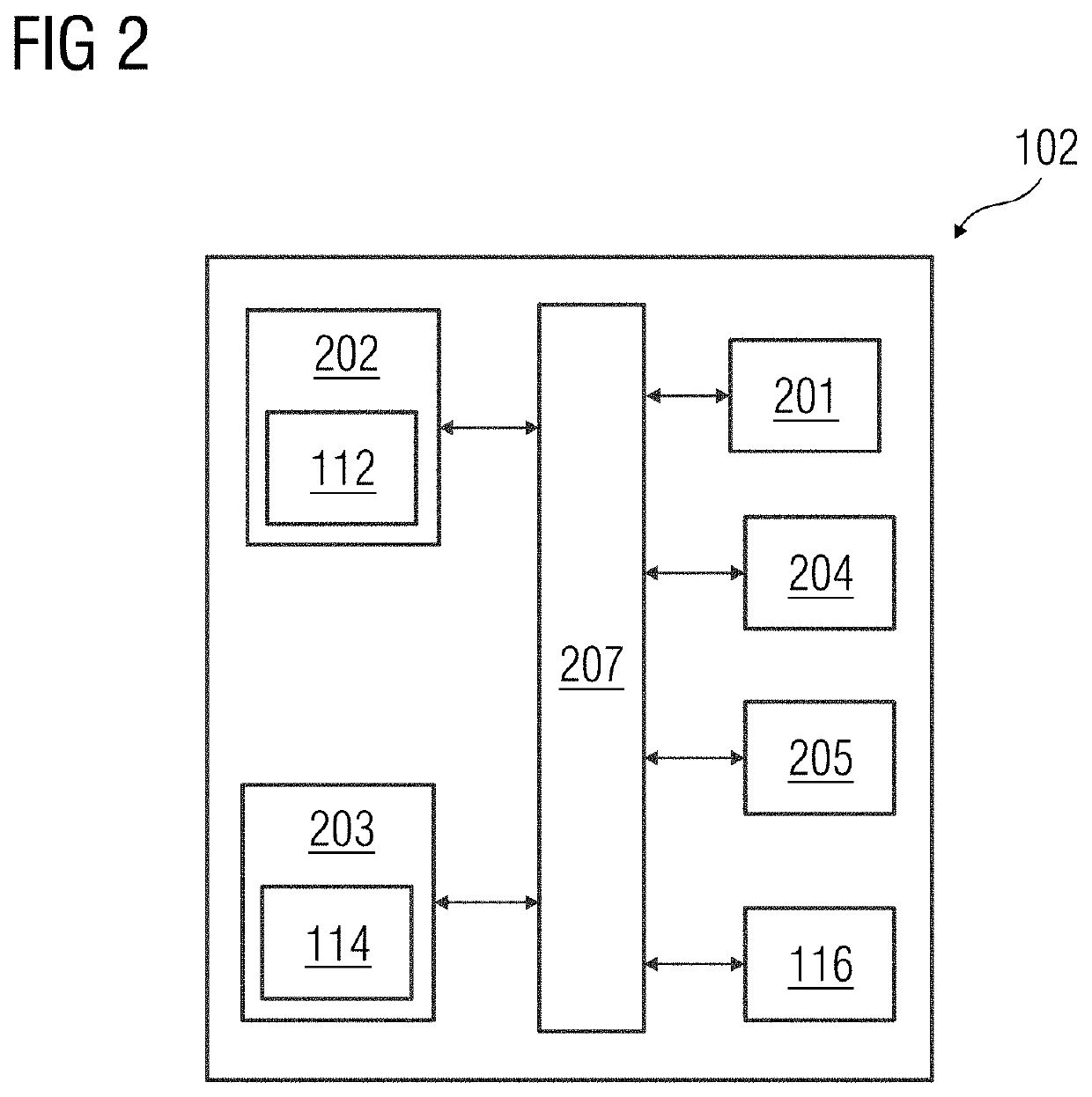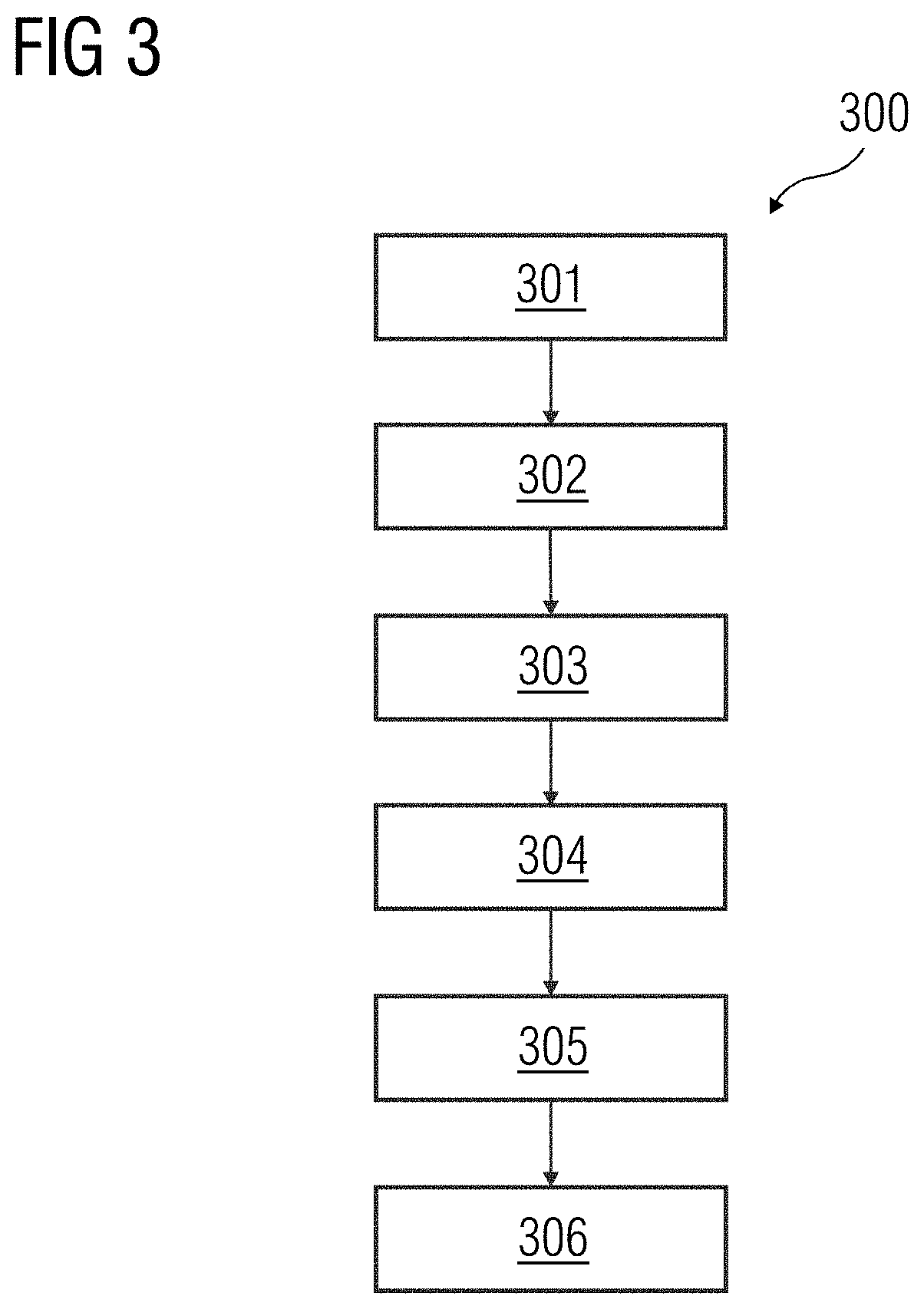Method, device and system for providing a virtual medical procedure drill
a virtual medical procedure and drill technology, applied in the field of virtual medical procedure drills, can solve the problems of human body, increased heart rate and endocrine functions of individuals, and affecting the efficiency and timeliness of medical care provided to individuals, so as to improve the health of patients, increase the body temperature of patients, and reduce the effect of stress
- Summary
- Abstract
- Description
- Claims
- Application Information
AI Technical Summary
Benefits of technology
Problems solved by technology
Method used
Image
Examples
first embodiment
[0077]FIG. 6 illustrates a method 600 of modifying the prediction of the number of repetitions of the virtual drill, according to a At act 601, a value associated with the one or more parameters is determined. The one or more parameters may be captured using the sensor 104 that may be coupled to the body of the patient. The parameter values may be, for example, blood pressure value associated with the patient, heart rate value associated with the patient, and / or body temperature value associated with the patient. At act 602, a pre-defined threshold associated with the one or more parameters associated with the patient is identified. The pre-defined threshold for the one or more parameters may be a normal range of values within which the one or more parameters may exist for an individual not experiencing any form of negative emotional response. In an embodiment, the pre-defined threshold for the one or more parameters may vary based on the age, gender, and medical history associated...
second embodiment
[0078]FIG. 7 illustrates a method 700 of modifying the prediction of the number of repetitions of the virtual drill, according to a At act 701, a value associated with the one or more parameters is determined. At act 702, a pre-defined threshold value associated with the one or more parameters is identified. At act 703, a determination is made if the one or more parameter values are above the pre-defined threshold. If the one or more parameter values are above the pre-defined threshold, at act 704, the number of repetitions of the virtual drill to be performed by the patient is increased. However, if the one or more parameter values associated with the patient is not above the pre-defined threshold, a notification may be generated for the patient enquiring the patient whether the patient wishes to continue with execution of another instance of the virtual drill. The notification may be displayed on a graphical user interface of the head mounted device 106 worn by the patient for th...
PUM
 Login to View More
Login to View More Abstract
Description
Claims
Application Information
 Login to View More
Login to View More - R&D
- Intellectual Property
- Life Sciences
- Materials
- Tech Scout
- Unparalleled Data Quality
- Higher Quality Content
- 60% Fewer Hallucinations
Browse by: Latest US Patents, China's latest patents, Technical Efficacy Thesaurus, Application Domain, Technology Topic, Popular Technical Reports.
© 2025 PatSnap. All rights reserved.Legal|Privacy policy|Modern Slavery Act Transparency Statement|Sitemap|About US| Contact US: help@patsnap.com



